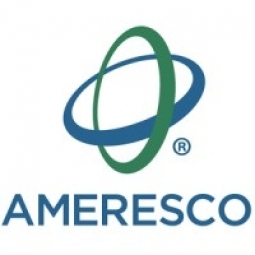Technology Category
- Sensors - Optical Sensors
- Sensors - Utility Meters
Applicable Industries
- Buildings
- Renewable Energy
Applicable Functions
- Facility Management
- Maintenance
Use Cases
- Smart City Operations
- Smart Lighting
About The Customer
The customer in this case study is the City of Boston, a municipal government in the United States. The city is committed to achieving carbon neutrality and has implemented various initiatives to achieve this goal. One of these initiatives is the Renew Boston Trust (RBT), a self-funding finance mechanism that uses the cost savings from efficiency projects to pay for themselves. The city has a large inventory of exterior lighting, including streetlights, traffic lights, athletic field and park lights, and school department security lighting. The city is also responsible for the energy efficiency of its public buildings, including schools, police stations, and property management facilities. The city has a budget for these initiatives and has allocated funds for the continuation of these projects.
The Challenge
The City of Boston, under the leadership of Mayor Michelle Wu, was faced with the challenge of aligning its municipal operations with its carbon neutrality goals. The city had an inventory of 80,000 streetlights and other exterior lighting fixtures that were not energy efficient. The city's Renew Boston Trust (RBT), a self-funding finance mechanism, was tasked with the responsibility of converting all electric lighting to efficient LED fixtures. The city had already released a request for qualifications in July 2021 and selected the contractor Ameresco, Inc to conduct an audit of the exterior lighting. The audit involved recording the location, technology, condition, and other relevant data of the exterior lighting over a period of six months. The city also had to develop energy conservation measures to reduce the amount of electricity and natural gas used by the city’s streetlights, traffic lights, athletic field and park lights, and school department security lighting.
The Solution
The city of Boston decided to conduct an initial audit of the exterior lighting as the first step in the process. The data collected from the audit was used to develop energy conservation measures designed to reduce the amount of electricity and natural gas used by the city’s streetlights, traffic lights, athletic field and park lights, and school department security lighting. The work to improve the efficiency of the fixtures was implemented in stages over several years. The city allocated $10.0 million in capital funds for this stage of the Renew Boston Trust project. The city also embarked on the third phase of the RBT building energy efficiency program, which involved conducting lighting improvements, water conservation, building envelope improvements, and pipe insulation upgrades in nine Boston Public Schools, one police station, and one property management facility. The city's FY23 budget contained $65 million in City capital funds for the continuation of Phase III of the RBT program.
Operational Impact
Quantitative Benefit

Case Study missing?
Start adding your own!
Register with your work email and create a new case study profile for your business.
Related Case Studies.

Case Study
Remote Monitoring & Predictive Maintenance App for a Solar Energy System
The maintenance & tracking of various modules was an overhead for the customer due to the huge labor costs involved. Being an advanced solar solutions provider, they wanted to ensure early detection of issues and provide the best-in-class customer experience. Hence they wanted to automate the whole process.

Case Study
Vestas: Turning Climate into Capital with Big Data
Making wind a reliable source of energy depends greatly on the placement of the wind turbines used to produce electricity. Turbulence is a significant factor as it strains turbine components, making them more likely to fail. Vestas wanted to pinpoint the optimal location for wind turbines to maximize power generation and reduce energy costs.

Case Study
Siemens Wind Power
Wind provides clean, renewable energy. The core concept is simple: wind turbines spin blades to generate power. However, today's systems are anything but simple. Modern wind turbines have blades that sweep a 120 meter circle, cost more than 1 million dollars and generate multiple megawatts of power. Each turbine may include up to 1,000 sensors and actuators – integrating strain gages, bearing monitors and power conditioning technology. The turbine can control blade speed and power generation by altering the blade pitch and power extraction. Controlling the turbine is a sophisticated job requiring many cooperating processors closing high-speed loops and implementing intelligent monitoring and optimization algorithms. But the real challenge is integrating these turbines so that they work together. A wind farm may include hundreds of turbines. They are often installed in difficult-to-access locations at sea. The farm must implement a fundamentally and truly distributed control system. Like all power systems, the goal of the farm is to match generation to load. A farm with hundreds of turbines must optimize that load by balancing the loading and generation across a wide geography. Wind, of course, is dynamic. Almost every picture of a wind farm shows a calm sea and a setting sun. But things get challenging when a storm goes through the wind farm. In a storm, the control system must decide how to take energy out of gusts to generate constant power. It must intelligently balance load across many turbines. And a critical consideration is the loading and potential damage to a half-billion-dollar installed asset. This is no environment for a slow or undependable control system. Reliability and performance are crucial.

Case Study
Energy Saving & Power Monitoring System
Recently a university in Taiwan was experiencing dramatic power usage increases due to its growing number of campus buildings and students. Aiming to analyze their power consumption and increase their power efficiency across 52 buildings, the university wanted to build a power management system utilizing web-based hardware and software. With these goals in mind, they contacted Advantech to help them develop their system and provide them with the means to save energy in the years to come.

Case Study
Remote Monitoring and Control for a Windmill Generator
As concerns over global warming continue to grow, green technologies are becoming increasingly popular. Wind turbine companies provide an excellent alternative to burning fossil fuels by harnessing kinetic energy from the wind and converting it into electricity. A typical wind farm may include over 80 wind turbines so efficient and reliable networks to manage and control these installations are imperative. Each wind turbine includes a generator and a variety of serial components such as a water cooler, high voltage transformer, ultrasonic wind sensors, yaw gear, blade bearing, pitch cylinder, and hub controller. All of these components are controlled by a PLC and communicate with the ground host. Due to the total integration of these devices into an Ethernet network, one of our customers in the wind turbine industry needed a serial-to-Ethernet solution that can operate reliably for years without interruption.

Case Study
Temperature monitoring for vaccine fridges
Dulas wanted a way to improve the reliability of the cold chain, facilitating maintenance and ensuring fewer vaccines are spoiled. Dulas wanted an M2M solution which would enable them to record and report the temperature inside vaccine refrigerators.



